If you love African Drumming you’ll love our sister company Bashiri. Here you’ll find every Bolga basket you can think of as well as African masks, mats, musical instruments, jewellery and more. Check out the website here https://bashiri.com.au/

If you love African Drumming you’ll love our sister company Bashiri. Here you’ll find every Bolga basket you can think of as well as African masks, mats, musical instruments, jewellery and more. Check out the website here https://bashiri.com.au/

Ever heard the term “Sessi” and wondered what we were talking about?
Sessi are shakers placed around the head of the djembe, representing shields worn by the drummer in war. They create a snare effect when placed on the djembe and can be slipped through the crown loops, the verticals, or secured with a strap.
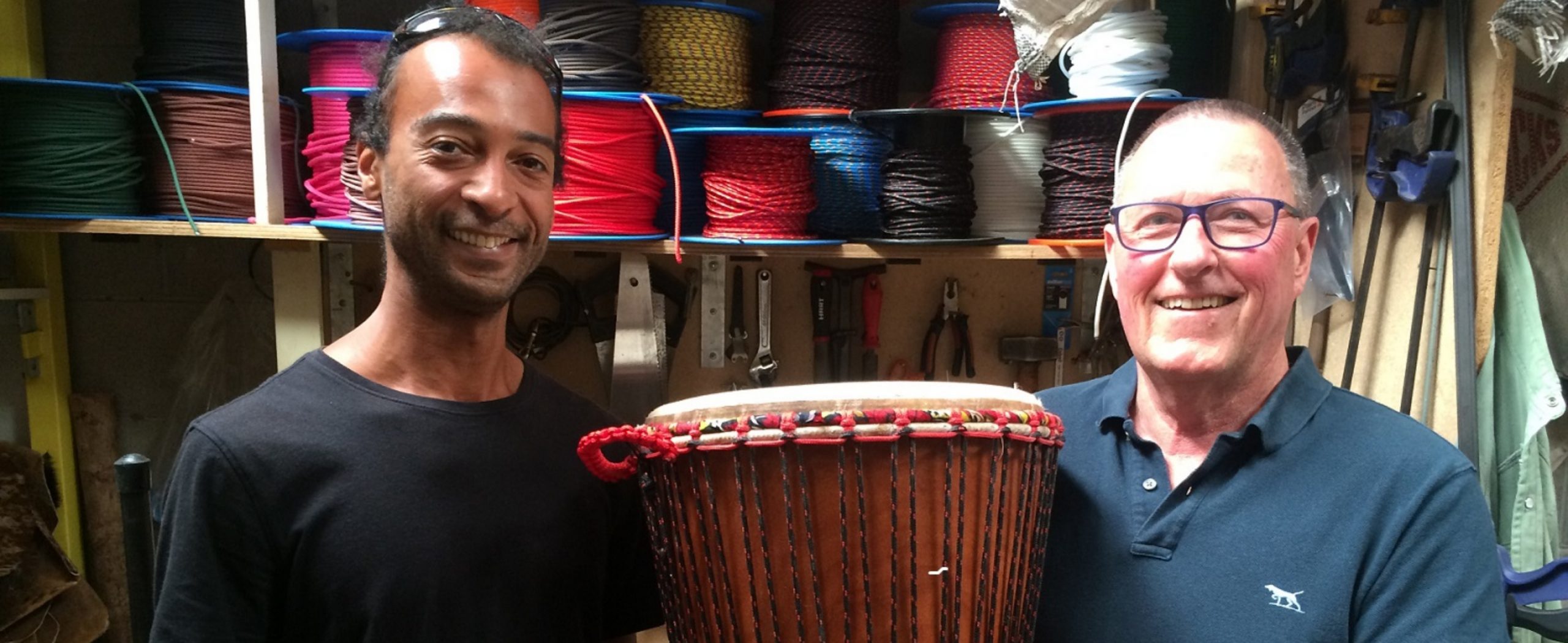
Join our experienced drum maker Bruno for a hands-on journey into drum building and walk away with your own brand new African Drum – personally customised with all your favourite features!
Building your own drum is a highly satisfying hands-on experience that connects you to your drum for life.

🔔 BEEP BEEP 🔔
Friendly reminder about our upcoming 𝗼𝗻𝗹𝗶𝗻𝗲 Teacher Training course!
Saturday 23rd October – Sunday 24th October 2021
Learn how to facilitate your own drumming classes just in time for the new year 😀
Our teacher training course runs online and onsite across Australia and is aligned with the current Australian Curriculum. We will build your musicality and confidence in facilitation and arm you with a tool kit of rhythms and games that you can implement into your programs straight away. You’ll also have access to and be supported by our robust Teachers Video Hub – the perfect resource for all your teaching requirements.

When it comes to choosing a handpan, there are several factors to consider. Do you want a handpan that will work better solo or alongside other instruments? Do you prefer a moody, melancholy sound, or a bright, warm one?
We’ve created this guide to help you find the perfect one!
The handpan is a new and mysterious instrument, distantly related in principle to the steelpan of Trinidad and Tobago, but inspired in sound by the Hang instrument from Switzerland. Played by hand, rather than sticks or mallets, the handpan has a rich, intimate sound, full of emotion. There is no specific technique or style in the art of playing a handpan. A player with patience and an open mind will be rewarded with deep layers of complexity to explore.
Browse our range of handpans here
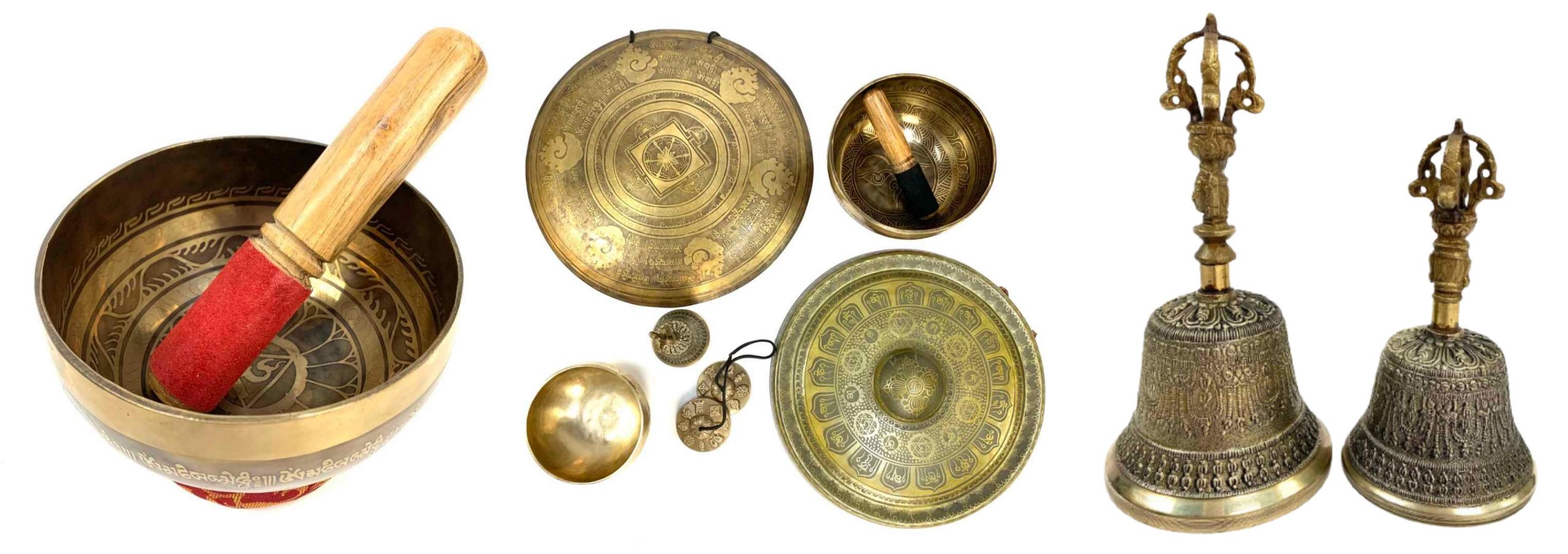
Tap into a state of mindfulness and meditation with our brand new range of healing instruments. Each item is handmade in Nepal.
Singing Bowls
Available in classic and decorated options, these bowls are here to guide you into deep meditation.
Comes complete with a cushion and striker.
Ceremonial Gongs
Boasting many layers of reverb, these traditional gongs are hand hammered from fine German Silver.
Each gong comes with a heavy mallet.
Meditation Bells
Instrumental in tantric Buddhism, the Vajra meditation bell represents wisdom, compassion and enlightenment.
Available in medium and large.
Tingsha Cymbals
Made of thick 100% brass, these instruments create a beautifully clear, high-pitched sound when struck together.
Multiple pairs can be played together for a fuller sound.
Sound therapy is built on the idea that our brains and bodies operate on various specific frequencies in order to grow, consolidate information, and heal. We can create sound vibrations at similar frequencies to those our brains use to encourage those beneficial states of being. Similar to meditation, we are trying to teach our brains to access those healing frequencies using a traditional and authentic method. Sound healing comes with many benefits, from an improved mood to better sleep patterns.

It’s almost that time!
Brand new djembe classes are kicking off Monday September 27th 🎵
Our 6-week cycles cover a full West African rhythmic arrangement, including support djembe parts, solos, breaks and calls. We focus on rhythms from the ancient/ traditional djembe nations (Mali, Guinea, Ivory Coast, Burkina Faso & Senegal), but delve into other grooves from Ghana on occasions.
Our lead facilitator is supported by a Dun (bass drum) player, so you’ll get the full polyrhythmic experience, which helps to develop your auditory skills too.
Beginner and inter community classes are available, led by Magic Mike.
Beginners @6.15pm – 7.45pm AEST
Intermediate @8pm – 9.30pm AEST
✨ PS. When you purchase a cycle, you receive 10% off our store, both online and onsite!
Register and learn more here

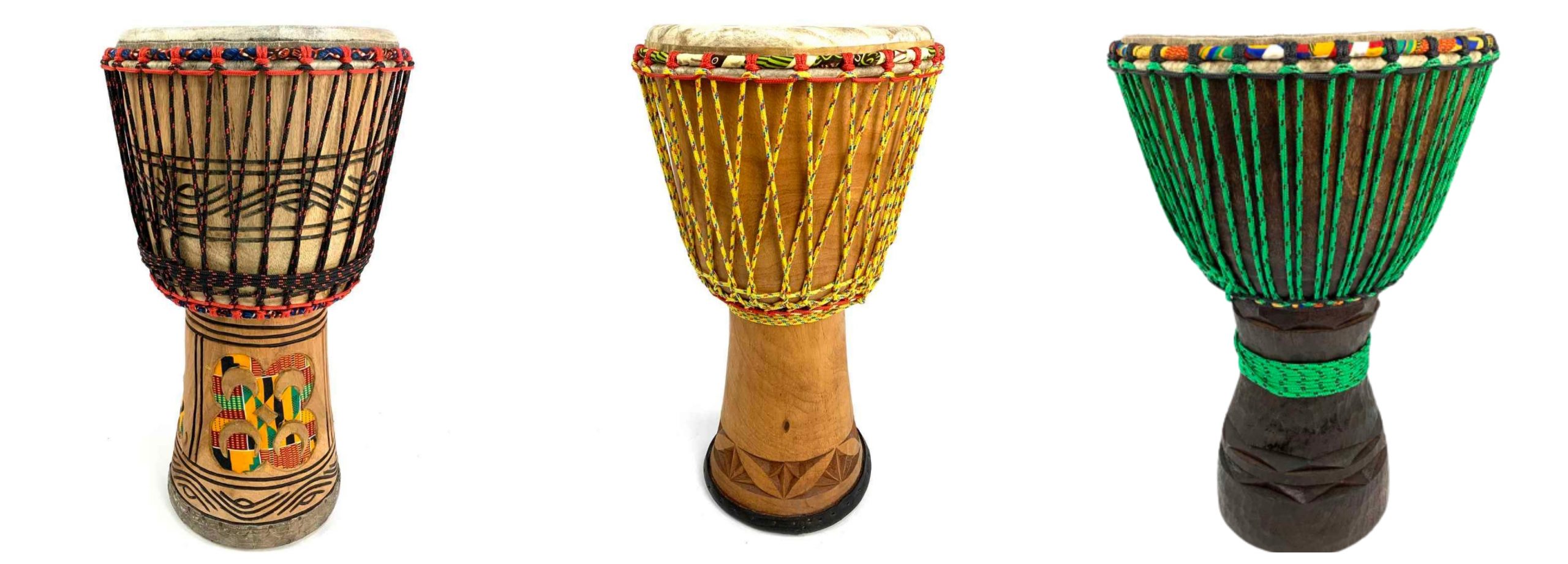
Here are some of our favourite facts about the West African djembe…

In the current state of the global pandemic and constantly changing environments, organisations are struggling to maintain a level of coherence amongst their teams. According to a study by Dr Eduardo Salas, Department of Psychology at Rice University, “Teams perform better when they possess ‘collective efficacy’, or a belief that their team can succeed”.
Our teams are experiencing a huge variety of unprecedented stressors in daily life, due to the pandemic, and this stress heavily contributes to an inability to maintain coordinated performance, which in turn creates negative outlooks and a disconnect from others.
So, if collective efficacy is a strong element of team success, how can we foster this attitude during these challenging times, where teams are becoming less connected and more isolated both on a physical and mental level?
Well, Dr Salas believes that teams need constant reminders about their wins and successes as well as a mutual monitoring amongst the cohort. What this means in simplified terms, is that our teams need to check in with one another, encourage each other and build each other up. The pandemic has seen a shift from a group mentality to an over focus on self, so organisations need to encourage individuals to come out of their shells and interact with each other again.
Collective efficacy is achieved when the group successfully comes together to achieve a goal or task, boosting the team’s belief in their ability to achieve. Giving your team an opportunity to perform a task together, where they each play their own part and work as a cohort through mutual monitoring, fosters group performance and in turn increases collective efficacy.
An African Drumming session allows teams to achieve a coordinated performance, where they must interact and closely monitor one another to achieve unison in rhythm. A beautiful metaphor which helps to build collective efficacy in a fun and stress-free environment. The session can help to re-develop friendships and a faith in their ability to adapt and learn new skills together.
The reason an African Drumming session is so good at developing collective efficacy is because these sessions nurture confidence gained by being a critical part of a team. Drumming is proven to improve team work and collaboration. The ensemble nature of the drumming, along with moving from structured rhythms to improvising, encourages new ideas within the context of a group.
This is just one example of a non-threatening way to reconnect your team during a time of shifting stressors and unparalleled disconnect. Something exciting and new can be the beginning of seeing a real positive transformation in your organisations as we move on from the chaos of COVID-19 towards greater collective efficacy 🥰

We’ve just received a batch of new ocean drum designs! Hand painted with stunning tribal and animal pictures, the ocean drum is a popular percussive accompaniment during meditation classes, sound baths and mindfulness retreats.
The ocean drum is held by the frame, with the head horizontal and played by rolling the wrists so the drum gently tilts in all directions.
The beads inside roll over the bottom head creating soulful wave-like sounds. Different speeds produce different sounds and stopping and starting creates crashing wave sounds.
Dr Dawn Joseph came across some fascinating findings when she visited our spring drum retreat in 2019, which launched a deeper investigation into the power of West African drumming.
Below are a few of our favourite points from the article:
The article is a powerful summary of our goals and values here at African Drumming. We strongly believe in educating the community in an authentic and genuine way, and take pride in building a strong and supportive community.
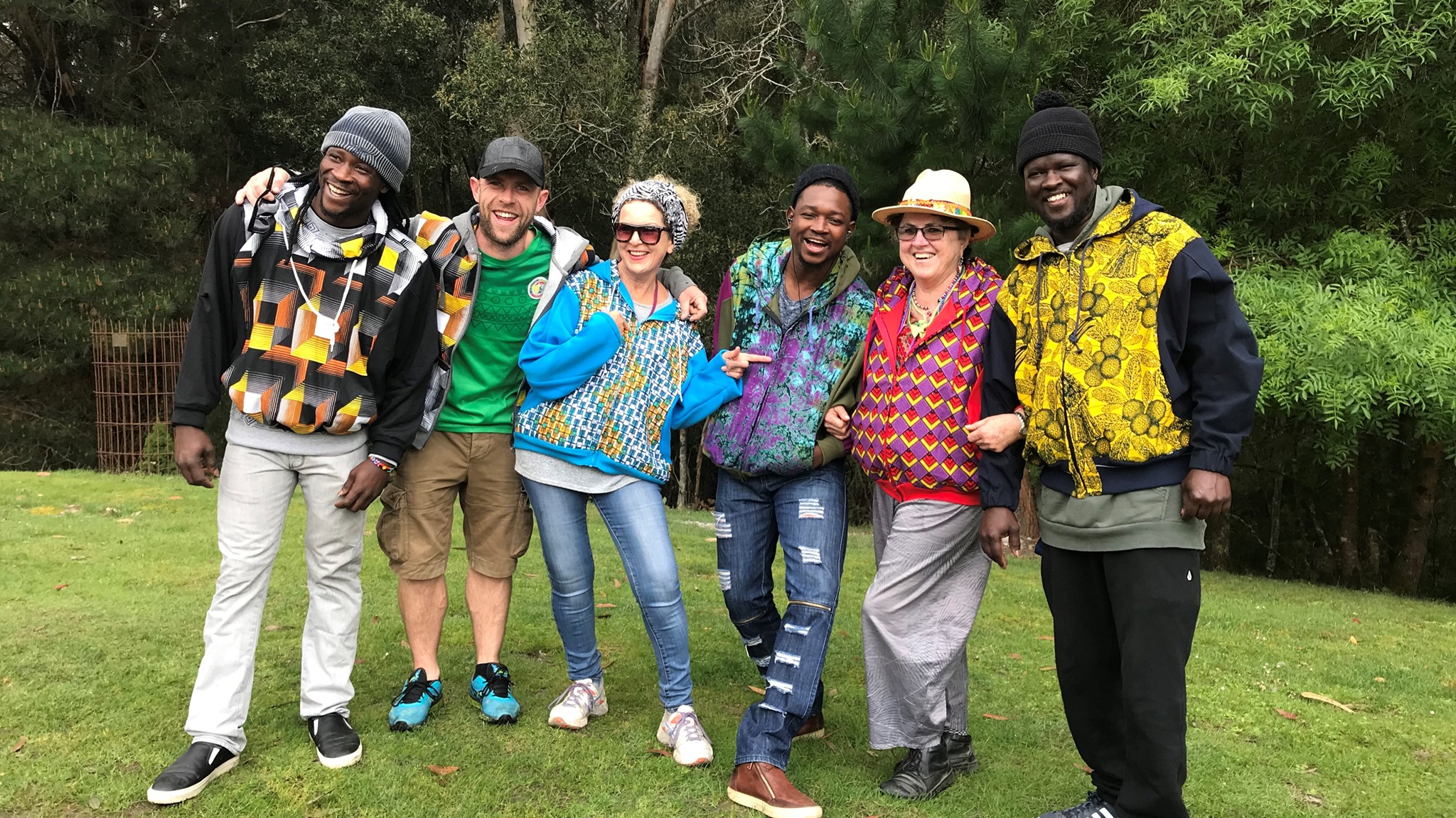
“If you say hi to one it may even talk right back!”
When you first hear the sound of a talking drum, it may catch you by surprise, and that is because the sounds of the drum can be manipulated to mimic the tone and prosody of human speech. They are so entertaining to listen to because they are unlike any other drum you might hear.
The talking drum is amongst the oldest instruments used by West African Griots, with their history tracing back to the Ghana Empire. There are many variants including size, origin and style. The ‘Tama’ Talking Drum of the Wolof people is handmade in Senegal and is recognisable by its smaller size and higher pitched tone. These smaller style drums are also played by the Malinke people. A larger style Talking Drum (shown in the video below) is commonly played by the Yoruba and Dagomba people, in their Lunna and Dùndún ensembles.
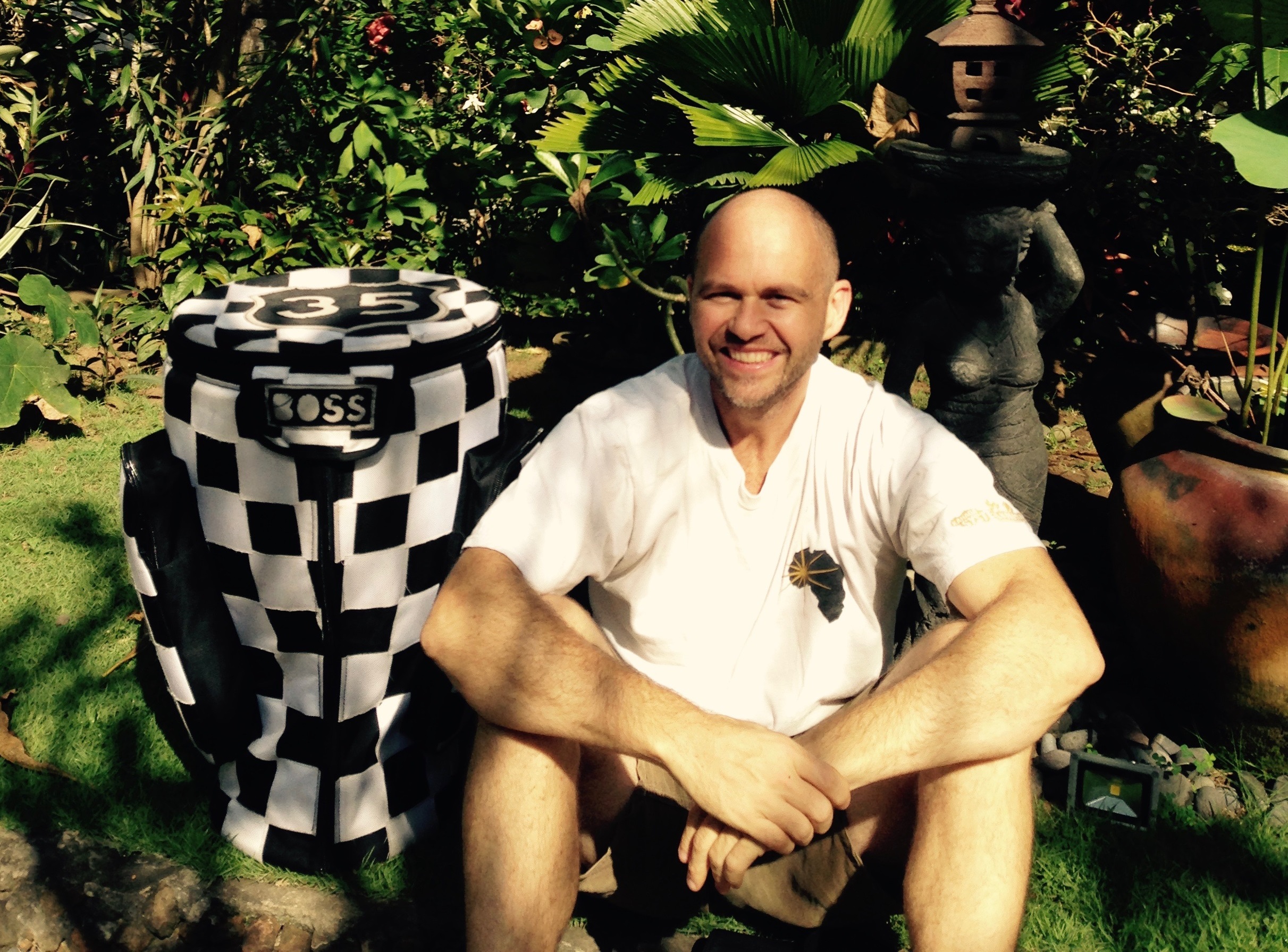
Protect your djembe for life with our following tips!
#1 The natural oils from your hands will condition the skin as you play. We don’t recommend the use of other conditioning agents as these can cause rot over time.
#2 A good bag will go a long way in protecting your djembe and preserving its skin, but be aware of the temperature conditions. If the bag is stored in a hot place it will act as a furnace.
#3 In Africa, drummers lean djembes on their side, so the wind and air can get into them and ventilate.
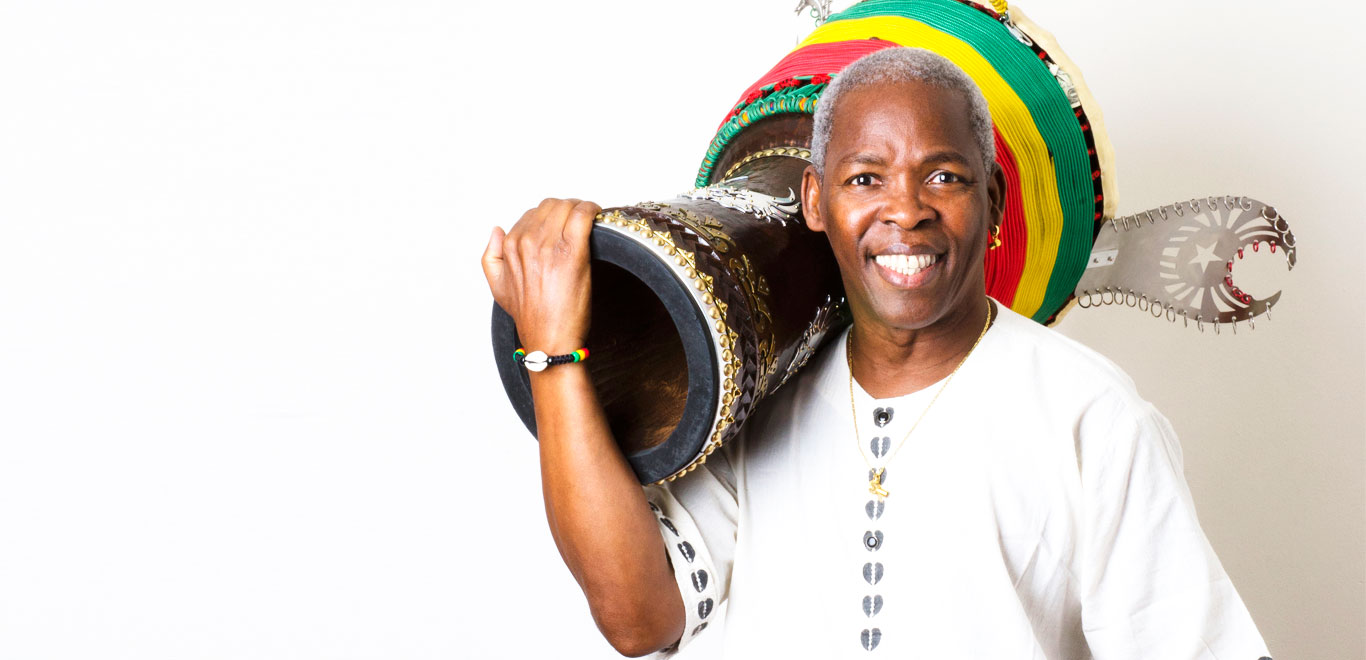
We lost a pioneer last month. Mamady Keita was a warm and giving teacher who made everyone feel welcome. A true patriot of Guinea and traditional West African music, he opened the doors to a new world for us – the global djembe community – which will continue to grow in his honour for years to come.
– Simon Fraser, Director
Image via Pan African Music

Photo of Bassidi Kone by Blacknote Photography
Did you know that the oral histories of the balafon date it back to at least the rise of the Mali Empire in the 12th century CE?
The balafon is a true work of art and an integral member of the idiophone family of tuned percussion instruments which includes the xylophone, marimba, glockenspiel, and vibraphone. The balafon’s beautiful sound is produced by striking the tuned keys with two padded sticks.
Check out our friends Burkina Azza (from Burkina Faso) below and shop our balafons here

Feeling a little disconnected from both yourself and Mother Earth lately? Drumming has been proven to help people reconnect in very powerful ways. The beautiful Djembe dates back hundreds of years from West Africa, and the creation of these drums was a very spiritual process. It is said that the playing of these drums and creating a beat allows us to focus more internally. The beat helps our brains to slow down and reconnect with our own physical rhythm. It also helps us to tune into the rhythms of the earth and keeps us more grounded. Even playing the djembe with others can help us reconnect with our community and allow us to feel a stronger sense of belonging.
It is super easy for anyone to learn how to play the Djembe. Even a simple beat can have amazing effects on our health and wellbeing. Our drums are made with the utmost love and care, and the highest quality. They are all beautifully crafted, and when not being played make a great ornamental piece in your house.
Check out our range of Djembes now, and feel more connected to the rhythms of the universe!

Buying a new Djembe can be a daunting task. It is a big investment, both financially and towards developing your drumming skills. When it comes time to buy a djembe, there are a number of things to consider before you commit to your purchase!
A big part of what makes a good djembe simply depends on your style and preference. There are a lot of good djembes out there; it’s just a matter of finding one (or two, or three!) that suit you.
Here is a list of 5 things we recommend you consider when choosing your djembe:
Not all djembes were created equal! There are a lot of low-quality drums out there, made quickly and carelessly for unsuspecting tourists. Playing one of these can be very discouraging, because they sound awful no matter how well you play. It is always best to get some advice from your teacher or a professional who can guide you to the right drum.
Finally, its all about the sound of your Djembe and the feeling you get when you play it. Don’t be afraid to give the drum a good play and see if it resonates with you. Remember too: “the drum will choose you”!